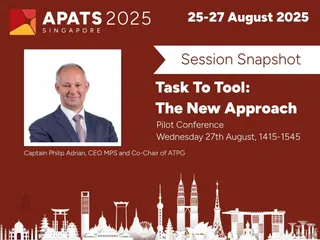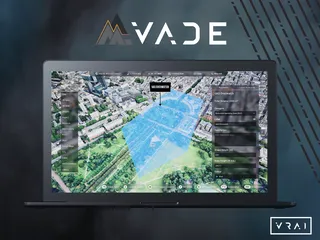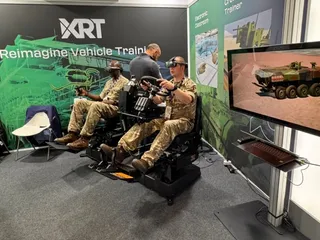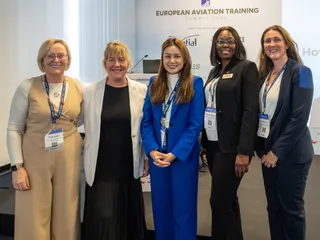Reimagining Aviation Training: A "Moonshot" for Safety and Sustainability
Contact Our Team
For more information about how Halldale can add value to your marketing and promotional campaigns or to discuss event exhibitor and sponsorship opportunities, contact our team to find out more
The Americas -
holly.foster@halldale.com
Rest of World -
jeremy@halldale.com

By Captain Philip Adrian FRAeS, CEO, Multi Pilot Simulations (MPS) and Co-Chair of the ATPG.
Philip has served the global aviation industry in many roles for over 35 years and is considered a Subject Matter Expert on Aviation Training, Simulation, Operational Suitability, EBT/CBTA, UPRT and world-wide operational regulatory affairs. He delivered a keynote address on the need for a training revolution at WATS 25 and will be speaking at APATS 2025 in Singapore.
The aviation industry has weathered every storm thrown at it - oil shocks, terrorist attacks, global pandemics, supply chain chaos. Yet today, we face a perfect storm of unprecedented pressures: geopolitical instability, environmental imperatives, and persistent safety lapses that refuse to be solved by traditional approaches.
Here's the uncomfortable truth: in this maelstrom, training, the very foundation of aviation safety, is still being treated as an expendable cost rather than the critical investment it must be.
After 35 years immersed in aviation training and operations, I've witnessed our industry's remarkable evolution. But whilst much has changed, there's a troubling constant: our approach to training remains frustratingly rooted in the past, precisely when we need radical innovation most.
The Uncomfortable Reality: Training Equals Safety
We all know the adage: "If you think safety is expensive, try an accident." But let me reframe it more precisely: "If you think training is expensive, try an accident."
Training and safety are inseparable. Yet our industry has consistently failed to create sustainable business models that prioritise high-quality training and genuinely invest in our frontline workforce.
The biggest barrier to progress? Ourselves. Our collective reluctance to challenge the status quo, our comfort with "that's how we've always done it." This mindset pervades airline leadership, training organisations, regulators, and unions alike. To borrow from Henry Ford: we risk being stuck with a faster horse.
Register for APATS 2025!Key Challenges—And How We Solve Them
Identifying problems is simple. Creating solutions and charting a clear path to the highest levels of safety through better, not just more, training? That's where the real work begins.
1. Give Training a Voice That Matters
The training industry suffers from a lack of representation. Airlines have IATA. OEMs have their powerful lobbying apparatus. Pilots, mechanics, and cabin crew all have established voices in regulatory corridors.
Training? We're the "ugly stepchild" with minimal influence and even less understanding from decision-makers.
Whilst initiatives like the Airline Manufacturers Training Association (AMFTA) represent progress, we need something far more ambitious. The creation of a broader industry body - one that provides expertise across every training stream, from ab initio to airline recurrent training - would allow us to identify and advance critical issues that regulatory mechanisms consistently mishandle or interpret differently across authorities.
Independent representation would finally overcome the paralysing "others don't do it that way" excuse that kills innovation before it starts.
2. End the "One Size Fits None" Fallacy
Our current approach to training is fundamentally broken. From day one, we train individuals with vastly different capabilities and competencies, yet prescribe uniform training and expect identical outcomes. This rigidity extends through recurrent training and checking systems.
The training needs of a junior First Officer bear no resemblance to those of a senior Captain. A junior Captain flying transatlantic routes requires entirely different preparation than a senior First Officer on domestic sectors.
Training and tools must be selected based on individual needs and desired outcomes, not on regulatory compliance or outdated technology requirements.
3. Regulatory Revolution: From Prescription to Performance
We must accelerate regulatory modernisation and move away from prescriptive regulations. Performance-based regulations are essential to keep pace with technological advancement and industry evolution.
Initiatives like EASA Rulemaking Task 0196, aimed at modernising training through "Task to Tool" approaches, represent positive steps. The FSTD Capability Signature (FCS) identified in ICAO Document 9625 Revision 4 points in the right direction. However, these processes move too slowly, leaving industry to outgrow the very regulations meant to govern it.
The "Task to Tool" approach, identifying training objectives and necessary fidelities to achieve them, provides a blueprint for new tool development. But we must guard against technology infatuation. Too many innovations are "brilliant solutions for non-existent problems" or "$5,000 fixes for $5 problems."
Airlines like Copa, Frontier, and Flair prove what's possible with proactive approaches, successfully integrating MPS FTDs into their training programmes whilst others wait for regulatory permission.
We need outcome-based, globally standardised regulations that are modern, flexible, and address aviation training holistically, not additional restrictions on already over-burdened training sessions. Current regulations, whilst once cutting-edge, are no longer fit for purpose. Input-driven regulations specifying hours and device types stifle innovation and prevent viable business cases.
We're deluding ourselves: training doesn't automatically equal learning, and hours aren't reliable quality indicators. The ease of auditing has contributed to a system where compliance often overshadows quality and safety. The 1500-hour rule exemplifies this, not because of the specific number, but because of its lack of meaningful correlation to competency.
Quality and safety must be our ultimate goals, not hours logged or training provided. Regulatory hurdles should never impede achieving optimal outcomes, even if it means pursuing entirely different methodologies.
4. Win the War for Talent
Beyond training methodology, we face a talent challenge shaped by our own practices. Archaic thinking, rigid work rules, high entry costs, and unrealistic expectations actively deter the current workforce, particularly Gen Z and Gen Alpha.
Aviation is often viewed as a less attractive employer due to inflexibility, "flight shaming," limited inclusivity, and rigid seniority systems. Add the industry's historical tendency toward force reductions during economic downturns, and we've created an image of fundamental instability.
Innovative change demands new thinking, new people, and fresh solutions. Asking the same people the same questions whilst expecting different results is, quite literally, insanity.
Our "Moonshot" Moment
Today's training often feels like a digital version of what I experienced decades ago. Computer-based training has replaced slide carousels, but the core essence remains largely unchanged, merely extended to cover new aircraft features.
Yet innovative solutions needn't be purely technological. A simple review of current regulations and training programmes reveals numerous immediate improvement opportunities.
Aviation stands at a crossroads where impactful decisions must be made with safety as the unwavering guiding principle. We must redefine training as an existential necessity, not a cost of doing business.
I'm encouraged by the fresh faces and perspectives at events like WATS and the upcoming APATS in Singapore. We desperately need new ideas, new people, and new leaders to champion these concepts and make aviation safer, better, more equitable, more inclusive, and genuinely future-proof.
In 1962, President Kennedy challenged a nation with his "Moon Speech," urging achievement of the seemingly impossible. His words resonate powerfully today: "We meet in an hour of change and challenge, in a decade of hope and fear, in an age of both knowledge and ignorance." He reminded us that "this industry was not built by those who waited and rested and wished to look behind them. This industry was conquered by those who moved forward, and so will we."
The Challenge
My call to action is straightforward: show the courage needed to accept this challenge. Let's set an ambitious target to overhaul aviation training and implement these crucial changes before the decade's end. Not because it will be easy, but precisely because it will be difficult.
Our industry, our livelihoods, and the lives of the travelling public depend on it.
If not now, then when? If not us, then who?
Let this moment be the genesis of something transformative. Let's move beyond "what was always done" and focus relentlessly on "what needs to be done" to secure a brighter future. Let's prioritise what's right and necessary over what's easy and cheap.
Working together, we can create future training solutions for future generations. The momentum and participation we're seeing suggests we're moving in the right direction. Let's sustain this collaborative effort and embark on our own "moonshot" for aviation training.
The question isn't whether we can afford to make these changes - it's whether we can afford not to.


